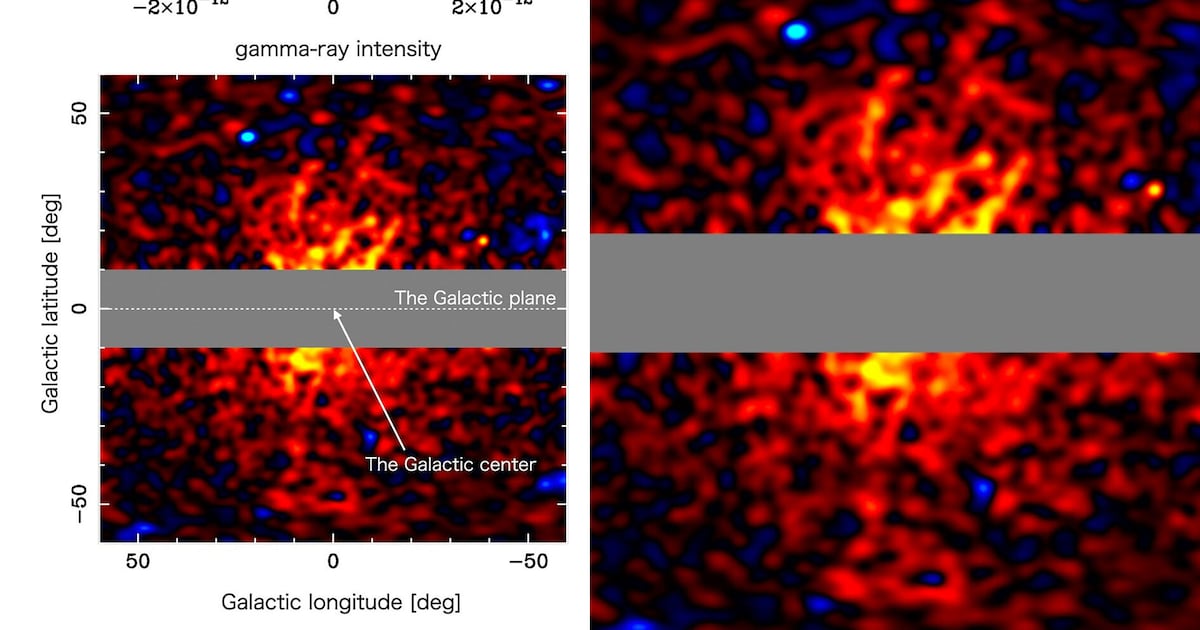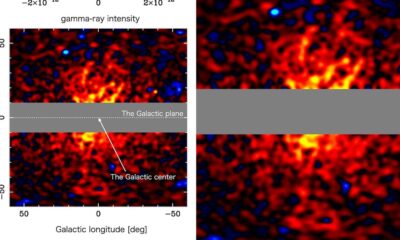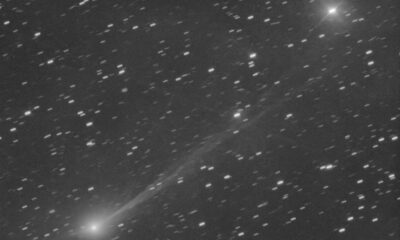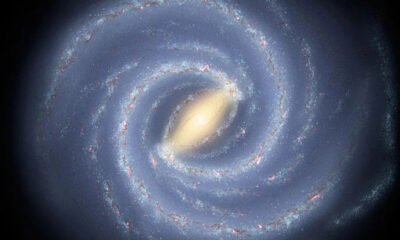Science
Japanese Researchers Claim First Detection of Dark Matter Signals

Researchers from the University of Tokyo have potentially made a groundbreaking discovery in the field of astrophysics by detecting signals of dark matter. This elusive substance, which has puzzled scientists since it was first identified by Swiss astronomer Fritz Zwicky in the 1930s, is believed to constitute most of the matter in the universe. Dark matter, described by NASA as the “invisible glue that holds the universe together,” cannot be observed directly, making its study particularly challenging.
The team, led by astronomer and astrophysicist Tomonori Totani, utilized data from NASA’s Fermi Gamma-ray Space Telescope to focus on regions of concentrated dark matter, particularly at the center of the Milky Way. Their years-long research aimed to find specific gamma rays that are predicted to result from the annihilation of theoretical dark matter particles known as weakly interacting massive particles (WIMPs).
In a significant development, Totani and his colleagues reported detecting gamma rays with a photon energy of 20 gigaelectronvolts, an extraordinarily high energy level. “We detected gamma rays extending in a halo-like structure toward the centre of the Milky Way galaxy,” Totani stated in a press release. “The gamma-ray emission component closely matches the shape expected from the dark matter halo.”
This discovery is particularly compelling because the gamma-ray measurements do not align with known astronomical phenomena or emissions, which leads Totani to assert that the data strongly indicates the presence of dark matter. “If this is correct, to the extent of my knowledge, it would mark the first time humanity has ‘seen’ dark matter,” he added. “This signifies a major development in astronomy and physics.”
The findings have been published in the Journal of Cosmology and Astroparticle Physics, but they await verification through independent analysis by other researchers. Yonatan Kahn, an assistant professor of physics at the University of Toronto, commented on the research, noting that many in the field have dedicated their careers to finding observational evidence of dark matter.
“What this paper is purporting to show is they saw signatures of dark matter particles that were annihilating to other particles that we are then able to observe with this telescope,” Kahn explained in an interview. He expressed some caution regarding the research, emphasizing the need for consistency with previous searches that have attempted similar observations but did not conclusively claim a discovery.
Kahn pointed out that the general concept has been explored before, suggesting that while this research offers a new analysis, it must be scrutinized against existing literature. The scientific community will be closely monitoring future developments and analyses to confirm or challenge these exciting new findings.
As the quest to understand dark matter continues, this potential breakthrough could reshape our understanding of the universe and the fundamental particles that constitute it.
-

 Politics3 weeks ago
Politics3 weeks agoSecwepemc First Nation Seeks Aboriginal Title Over Kamloops Area
-

 World4 months ago
World4 months agoScientists Unearth Ancient Antarctic Ice to Unlock Climate Secrets
-

 Entertainment5 months ago
Entertainment5 months agoTrump and McCormick to Announce $70 Billion Energy Investments
-

 Lifestyle4 months ago
Lifestyle4 months agoTransLink Launches Food Truck Program to Boost Revenue in Vancouver
-

 Science5 months ago
Science5 months agoFour Astronauts Return to Earth After International Space Station Mission
-

 Technology3 months ago
Technology3 months agoApple Notes Enhances Functionality with Markdown Support in macOS 26
-

 Top Stories2 months ago
Top Stories2 months agoUrgent Update: Fatal Crash on Highway 99 Claims Life of Pitt Meadows Man
-

 Lifestyle3 months ago
Lifestyle3 months agoManitoba’s Burger Champion Shines Again Amid Dining Innovations
-

 Politics4 months ago
Politics4 months agoUkrainian Tennis Star Elina Svitolina Faces Death Threats Online
-

 Sports5 months ago
Sports5 months agoSearch Underway for Missing Hunter Amid Hokkaido Bear Emergency
-

 Politics4 months ago
Politics4 months agoCarney Engages First Nations Leaders at Development Law Summit
-

 Technology5 months ago
Technology5 months agoFrosthaven Launches Early Access on July 31, 2025





















